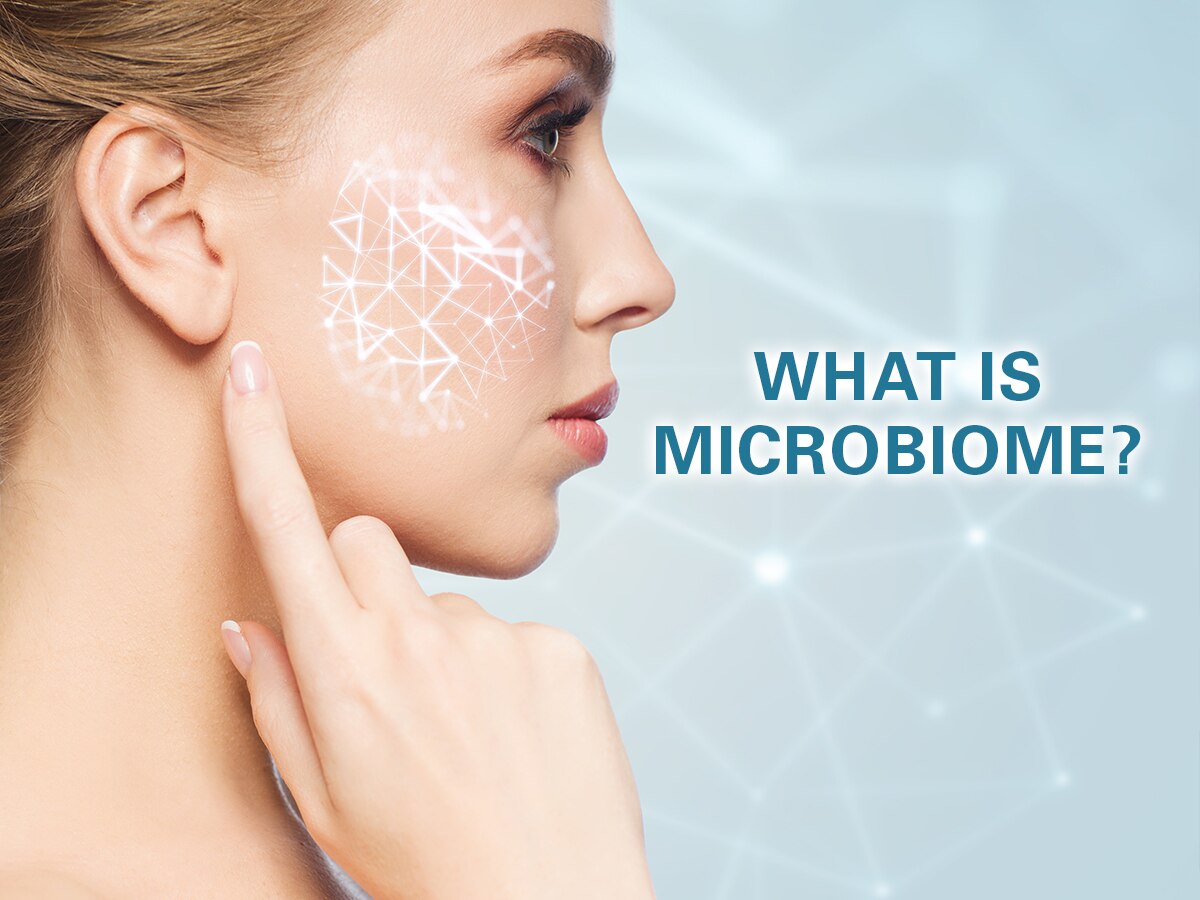We often hear the term “microbiome” these days. We’ve heard all about how it is important to balance the good bacteria in our intestines to improve our overall health, but the human body is full of microbiome that affect different systems of the body. Microbiome is a term that refers to any group or collection of microorganisms that live in a certain place. Our skin is another organ in our body, the largest organ, that hosts an intricate balance of bacteria on its surface. The microbiome (pH) of the skin affects the outer layer of the skin as well as the interior and is crucial to overall skin health, protection from disease and infection, and provides a barrier to the pollutants of the outside world. Understanding a little about how the skin’s microbiome works, will help you make better decisions about your skincare.
The skin’s acid mantle (pH) is created by the sebaceous glands and the sweat glands producing sebum and sweat, respectively, to create a fine acidic film on the skin’s surface. This acidic film keeps the millions of bacteria, viruses, and environmental pollutants at bay. It serves as another layer of protection to the body by protecting the skin, which in turn, acts as a barrier to the body. The body’s interior being mostly alkaline, creates a nice balance between the skin’s acidic pH. The ability to maintain this balance, is what keeps our skin healthy and beautiful. When the acid mantle is out of balance, dirt, bacteria, and other microorganisms can enter the pores and create acne. Over-cleansing disrupts the pH of the acid mantle, causing an imbalance of this crucial layer of protection.
The regions that we are typically concerned with when it comes to the effect of the microbiome on the skin are the face, chest, and back as these areas produce higher levels of oil and are most prone to acne. The overproduction of oil or sebum from the sebaceous glands (often occurring during the teen years) causes an imbalance in the skin’s acid mantle. This, in turn, causes inflammation where the pores become clogged. Bacteria has the opportunity to enter the skin’s pores. Any imbalance in the acid mantle can throw the skin’s microbiome off. We often react by using products to dry out the area, which contain high levels of acids. These products often exacerbate the issue. Using the right cleanser can help restore the pH balance without stripping the skin of good bacteria.
Blemfree™, from Equibal Labs, is a line of acne treatment that includes washes, gentle exfoliants, and moisturizers that work with your skin’s ideal pH level to give you healthy, clear skin. Blemfree™ is different from other products on the market because it works to eliminate acne and prevent future breakouts through a daily routine, regardless of skin type. The botanical ingredients in Blemfree™ cleanse, tone, and nourish the skin without disrupting the acid mantle of the skin. With daily use, skin care issues can be corrected, delivering long-lasting results.
Understanding how your skin’s chemistry works, can make you a better-informed consumer and give you the tools to buy products that will work rather than waste your money on products that could make the problem worse and cause even more inflammation. Blemfree™ is a system of products that has been carefully developed to work together to give you the results you want. Implementing a skincare routine that uses gentle, yet effective, ingredients to work with your body’s chemistry is the way to get lasting results. By understanding that your products may be actually making your acne worse by disrupting the microbiome of your skin, you can choose products that will help, rather than harm, your skin. Make Blemfree™ your choice for skincare and feel confident you are using the best products for your overall skin health.
Sources:
Grice, E. and Segre, J. (2011). The skin microbiome. National Library of Medicine, National Institutes of Health. Retrieved from: https://www.ncbi.nlm.nih.gov/pmc/articles/PMC3535073/
Schmid, M.D. and Korting, Korting, H.C. (1995). The concept of the acid mantle of the skin; its relevance for the choice of skin cleansers. Dermatology. 191 (4) pp. 276-80. Retrieved from: https://web.archive.org/web/20110301151916/http://www.sebamed.com/fileadmin/user_upload/pdf/Studien/Saeuremantelkonzept/1.05.pdf
By: Sara E. Goodwin


